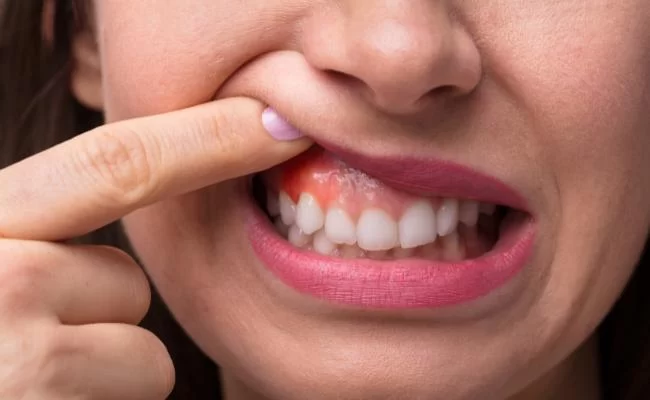
- Understanding Causes of Bleeding Gums
- Common Health Conditions Linked to Bleeding Gums
- Daily Habits and Environmental Factors Affecting Gum Health
- How to Recognize When Bleeding Gums Need Professional Attention
- Practical Tips and Effective Treatments for Bleeding Gums
- Personal Experience and Real-Life Cases
- Why Consulting Experts Matters - Dentistry Toothtruth
1. Understanding Causes of Bleeding Gums
Bleeding gums are a common dental concern that many people experience at some point in their lives. But why do gums bleed? The causes of bleeding gums are varied and often interconnected. At its core, gum bleeding usually indicates inflammation or damage to the soft tissue that surrounds and supports your teeth. One primary reason for bleeding gums is gingivitis, the early stage of gum disease, which results from the buildup of plaque—a sticky film of bacteria—on your teeth and gums.
Understanding the root causes helps in managing and preventing further complications. While occasional gum bleeding can happen after aggressive brushing or flossing, persistent bleeding is a red flag that your oral hygiene or overall health might need attention.
1.1 Inflammation and Infection
The inflammation of gum tissues triggers blood vessels to become more fragile, causing them to bleed easily. Gingivitis, characterized by redness, swelling, and bleeding, can progress to periodontitis if left untreated, potentially leading to tooth loss.
1.2 Mechanical Injury
Brushing too hard or using a hard-bristled toothbrush can injure gums, causing bleeding. Additionally, improper flossing techniques or accidental trauma during eating can also lead to bleeding.
1.3 Nutritional Deficiencies and Systemic Conditions
Sometimes bleeding gums reflect underlying health issues such as vitamin C deficiency (scurvy), blood disorders, or even diabetes. These conditions reduce the body’s ability to heal and increase gum sensitivity.
2. Common Health Conditions Linked to Bleeding Gums
Bleeding gums are not just an isolated oral health issue; they often mirror broader health concerns. Recognizing these connections can enhance your understanding and prompt timely medical intervention.
2.1 Diabetes and Gum Health
People with diabetes are at higher risk for gum disease because high blood sugar levels can impair immune response and promote bacterial growth. This can cause gums to become inflamed and bleed more easily.
2.2 Hormonal Changes
Pregnancy, menstruation, and menopause can cause hormonal fluctuations that increase gum sensitivity and the likelihood of bleeding. This is often referred to as pregnancy gingivitis.
2.3 Blood Disorders and Medications
Conditions such as leukemia or clotting disorders and medications like blood thinners can contribute to bleeding gums by affecting blood clotting or the immune system’s response.
3. Daily Habits and Environmental Factors Affecting Gum Health
Sometimes the causes of bleeding gums are hidden in everyday behaviors and environmental influences. A careful look at lifestyle can provide clues for improvement.
3.1 Oral Hygiene Practices
While brushing and flossing are essential, overdoing or performing them incorrectly can cause gum trauma. Using an appropriate toothbrush and gentle technique is vital.
3.2 Tobacco Use
Smoking or chewing tobacco not only worsens gum inflammation but also masks early symptoms like bleeding, making gum disease harder to detect and treat.
3.3 Diet and Hydration
Poor nutrition and dehydration can reduce saliva flow, which protects gums. Lack of vitamin C and other nutrients can weaken gum tissue, increasing susceptibility to bleeding.
4. How to Recognize When Bleeding Gums Need Professional Attention
Knowing when to consult a dental professional is crucial for preventing serious gum disease or other health complications.
4.1 Frequency and Duration
If gum bleeding happens regularly, especially without apparent cause, it’s time to seek expert advice.
4.2 Associated Symptoms
Swollen, tender, or receding gums, persistent bad breath, or loose teeth alongside bleeding indicate advancing gum problems.
4.3 Systemic Warning Signs
Bleeding gums accompanied by fatigue, unexplained bruising, or bleeding elsewhere should prompt a medical evaluation.
5. Practical Tips and Effective Treatments for Bleeding Gums
Managing bleeding gums involves a combination of improved oral care and professional treatments. Below are practical strategies that have proven effective.
5.1 Proper Oral Hygiene Routine
Use a soft-bristled toothbrush, floss gently but thoroughly, and rinse with an antiseptic mouthwash to reduce plaque buildup and soothe gums.
5.2 Regular Dental Visits
Professional cleanings remove hardened plaque (tartar) that cannot be eliminated by brushing alone. Dentists can also detect early signs of gum disease and offer targeted treatments.
5.3 Nutrition and Lifestyle Adjustments
Incorporate foods rich in vitamin C and antioxidants, stay hydrated, and avoid tobacco products to strengthen gum health.
5.4 Medical Treatments
In cases of advanced gum disease, scaling and root planing or antibiotic therapy may be necessary. Consulting healthcare providers for systemic conditions affecting gums is equally important.
6. Personal Experience and Real-Life Cases
Consider the case of Lisa, a 34-year-old who ignored mild gum bleeding for months, attributing it to brushing too hard. Over time, her gums became tender and swollen. Upon visiting her dentist, she was diagnosed with early periodontitis. Thanks to timely intervention, including professional cleaning and improved oral care, Lisa reversed the damage and regained healthy gums. Her story underscores how easy it is to overlook bleeding gums and the importance of prompt attention.
Another notable example is the rise in bleeding gum complaints among pregnant women, explained by hormonal shifts. This has sparked awareness campaigns emphasizing dental checkups during pregnancy, highlighting how understanding the causes of bleeding gums can lead to better health outcomes.
7. Why Consulting Experts Matters - Dentistry Toothtruth
Bleeding gums can be more than a nuisance—they may signal serious health issues. At Dentistry Toothtruth, expert advice and tailored dental solutions are available to help you address the root causes of bleeding gums effectively. Whether you seek professional consultation, trusted products, or personalized treatment plans, Dentistry Toothtruth is your resource for maintaining strong, healthy gums.
Don’t wait for symptoms to worsen. Understanding the causes of bleeding gums and taking action with expert support can safeguard your smile and overall well-being.







 Ivory Dental and Orthodontic Specialists4.0 (73 review)
Ivory Dental and Orthodontic Specialists4.0 (73 review) Sugar Bug Buster of Rialto5.0 (4 review)
Sugar Bug Buster of Rialto5.0 (4 review) Jeffrey J. Emmi, DMD5.0 (3 review)
Jeffrey J. Emmi, DMD5.0 (3 review) North Cobb Endodontics5.0 (64 review)
North Cobb Endodontics5.0 (64 review) Dentistry At Suburban Square: Michael I. Wollock, DMD4.0 (1228 review)
Dentistry At Suburban Square: Michael I. Wollock, DMD4.0 (1228 review) Aspen Dental - Merrillville, IN4.0 (754 review)
Aspen Dental - Merrillville, IN4.0 (754 review) The Importance of Oral Health Education During Pregnancy for a Healthy Pregnancy
The Importance of Oral Health Education During Pregnancy for a Healthy Pregnancy Best Tips for Brushing Your Teeth Properly for Healthy Gums: Essential Techniques for Oral Health
Best Tips for Brushing Your Teeth Properly for Healthy Gums: Essential Techniques for Oral Health Why Skipping Dental Checkups Can Lead to Bigger Oral Health Problems
Why Skipping Dental Checkups Can Lead to Bigger Oral Health Problems Advantages of Porcelain Dental Restorations
Advantages of Porcelain Dental Restorations How Can Diabetes Cause Tooth and Gum Problems? Preventing and Managing Oral Health Issues
How Can Diabetes Cause Tooth and Gum Problems? Preventing and Managing Oral Health Issues Healthy Habits for Promoting Good Oral Health and Hygiene: Tips for a Healthy Smile
Healthy Habits for Promoting Good Oral Health and Hygiene: Tips for a Healthy Smile